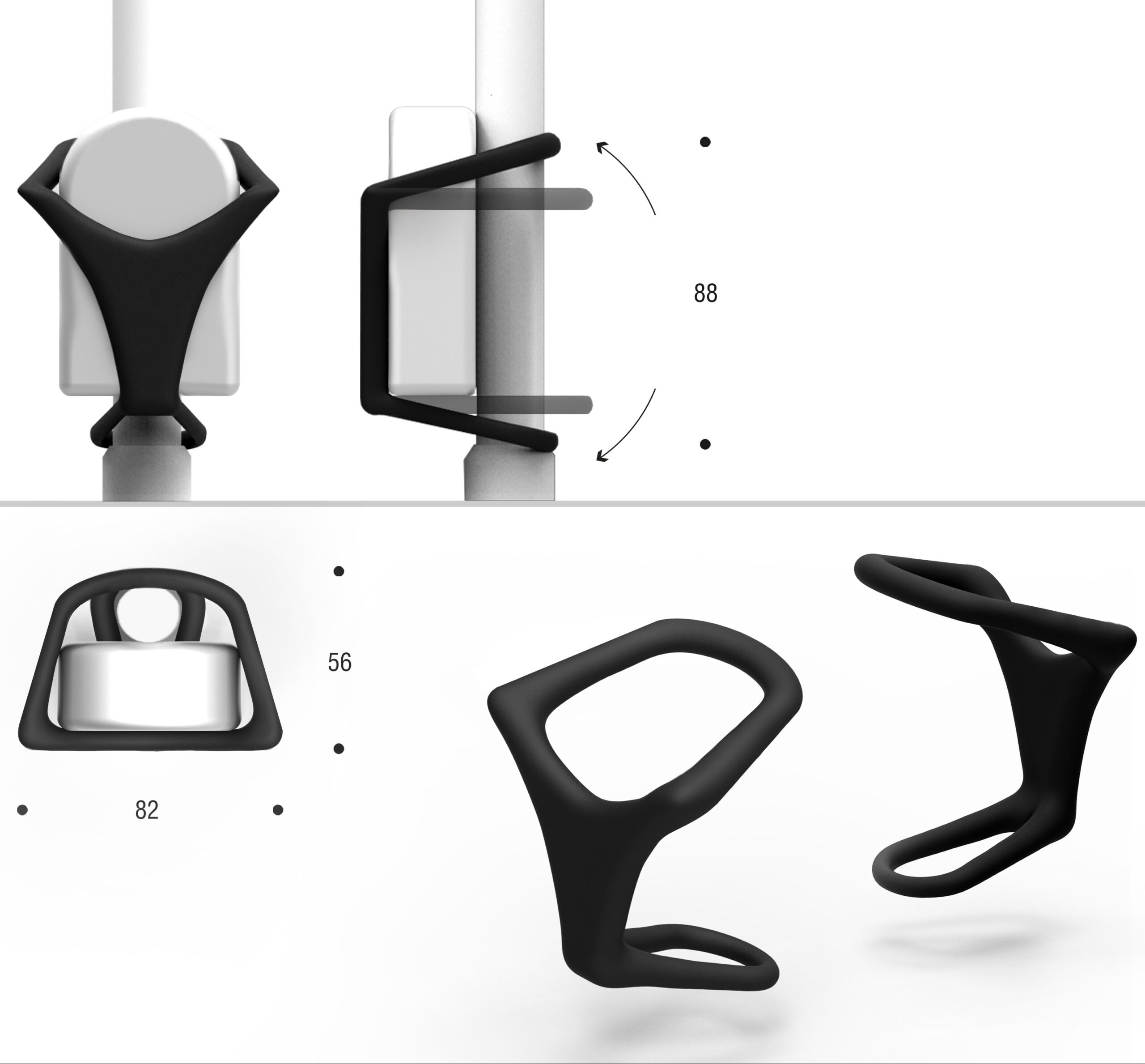 Visual impairment is a global health issue which impacts the life of about 285 millions of people, interfering with their daily activities and routine. Among the major obstacles faced everyday by blind and visually impaired people, orientation and mobility are of utmost relevance, preventing a fully autonomous life. The design of a wearable user-centered device aimed at helping the blind and visually impaired people orientating and navigating in unknown context is at the center of this work. An intensive interviews phase focused on gathering information about end users’ needs, to be then transformed into system functionalities, was carried out together with an accurate analysis on the state of the art systems, whose strengthen and weaknesses were defined. Once this preliminary phase of problem analysis has been completed, the team focused on the concept generation and screening, defining the most appropriate technologies and the hardware components, capable of ensuring accessibility, usability and low price of the system to be developed. Since the core of the entire system is a common smartphone, the software integration and optimization took place and an application based on an ad-hoc navigation algorithm was developed. To facilitate and effectively manage the application development, a variation of the waterfall design methodology was used.
Visual impairment is a global health issue which impacts the life of about 285 millions of people, interfering with their daily activities and routine. Among the major obstacles faced everyday by blind and visually impaired people, orientation and mobility are of utmost relevance, preventing a fully autonomous life. The design of a wearable user-centered device aimed at helping the blind and visually impaired people orientating and navigating in unknown context is at the center of this work. An intensive interviews phase focused on gathering information about end users’ needs, to be then transformed into system functionalities, was carried out together with an accurate analysis on the state of the art systems, whose strengthen and weaknesses were defined. Once this preliminary phase of problem analysis has been completed, the team focused on the concept generation and screening, defining the most appropriate technologies and the hardware components, capable of ensuring accessibility, usability and low price of the system to be developed. Since the core of the entire system is a common smartphone, the software integration and optimization took place and an application based on an ad-hoc navigation algorithm was developed. To facilitate and effectively manage the application development, a variation of the waterfall design methodology was used.
Contemporaneously, the physical development of the necessary hardware supports was carried out, exploiting the 3D printing technology and testing the material produced in order to define and implement the possible improvements. Moreover, to make the system less invasive as possible, the tools already exploited by the blind and visually impaired community were integrated. An extensive usability testing phase with a visually impaired user was then realized in a metro station in Milan, so taking into account a realistic scenario of possible use of our application. The overall result of the testing phase was positive and the feedbacks about the system feasibility were gathered in order to fix the future improvements.
Principal Academic Tutor
Paolo Prinetto, Department of Control and Computer Engineering, Politecnico di Torino
Academic Tutors
Giuseppe Airò Farulla, Department of Control and Computer Engineering, Politecnico di Torino
Basilio Bona, Department of Control and Computer Engineering, Politecnico di Torino
Vincenzo Caglioti, Department of Electronics, Information and Bioengineering, Politecnico di Milano
Marco Indaco, Department of Control and Computer Engineering, Politecnico di Torino
Matteo Matteucci, Department of Electronics, Information and Bioengineering, Politecnico di Milano
Bartolomeo Montrucchio, Department of Control and Computer Engineering, Politecnico di Torino
Stefano Rosa, Department of Control and Computer Engineering, Politecnico di Torino
Ludovico O. Russo, Department of Control and Computer Engineering, Politecnico di Torino
External institutions
Consiglio Nazionale delle Ricerche
Scuola Superiore Sant’Anna
Unione Italiana Ciechi e Ipovedenti
Consorzio Interuniversitario Nazionale per l’Informatica
Istituto Superiore Mario Boella
Team members
Fabrizio Callari, Electrical Engineering, Politecnico di Torino [Team Controller and Communication Coordinator]
Sebastiano Castello, Automation Engineering, Politecnico di Milano
Filippo Garolla, Computer Engineering, Politecnico di Milano
Dario Passi, Design & Engineering, Politecnico di Milano
Milica Pavlovic, Interior Design , Politecnico di Milano
Enrico Scopelliti, Computer Engineering, Politecnico di Torino
